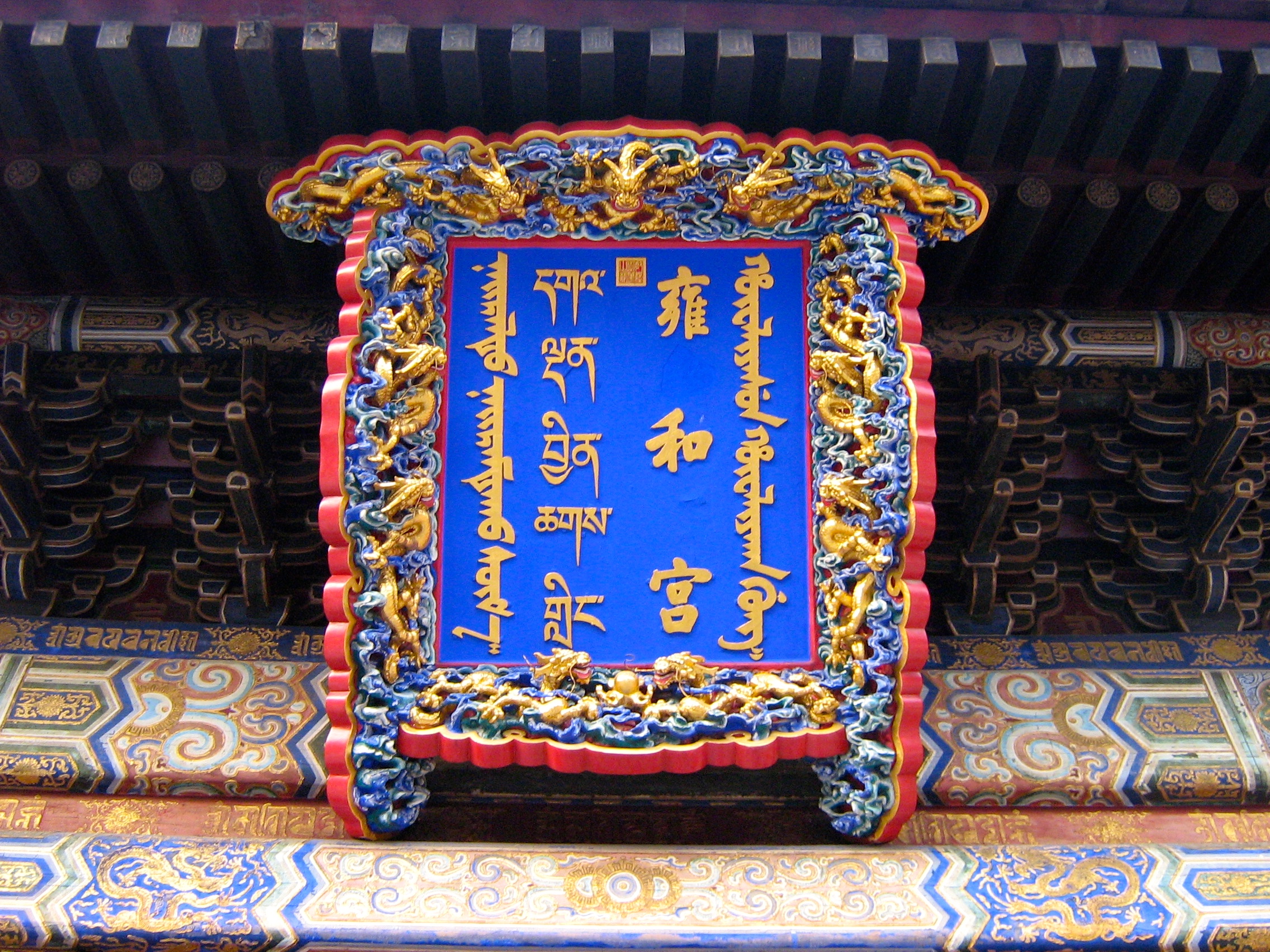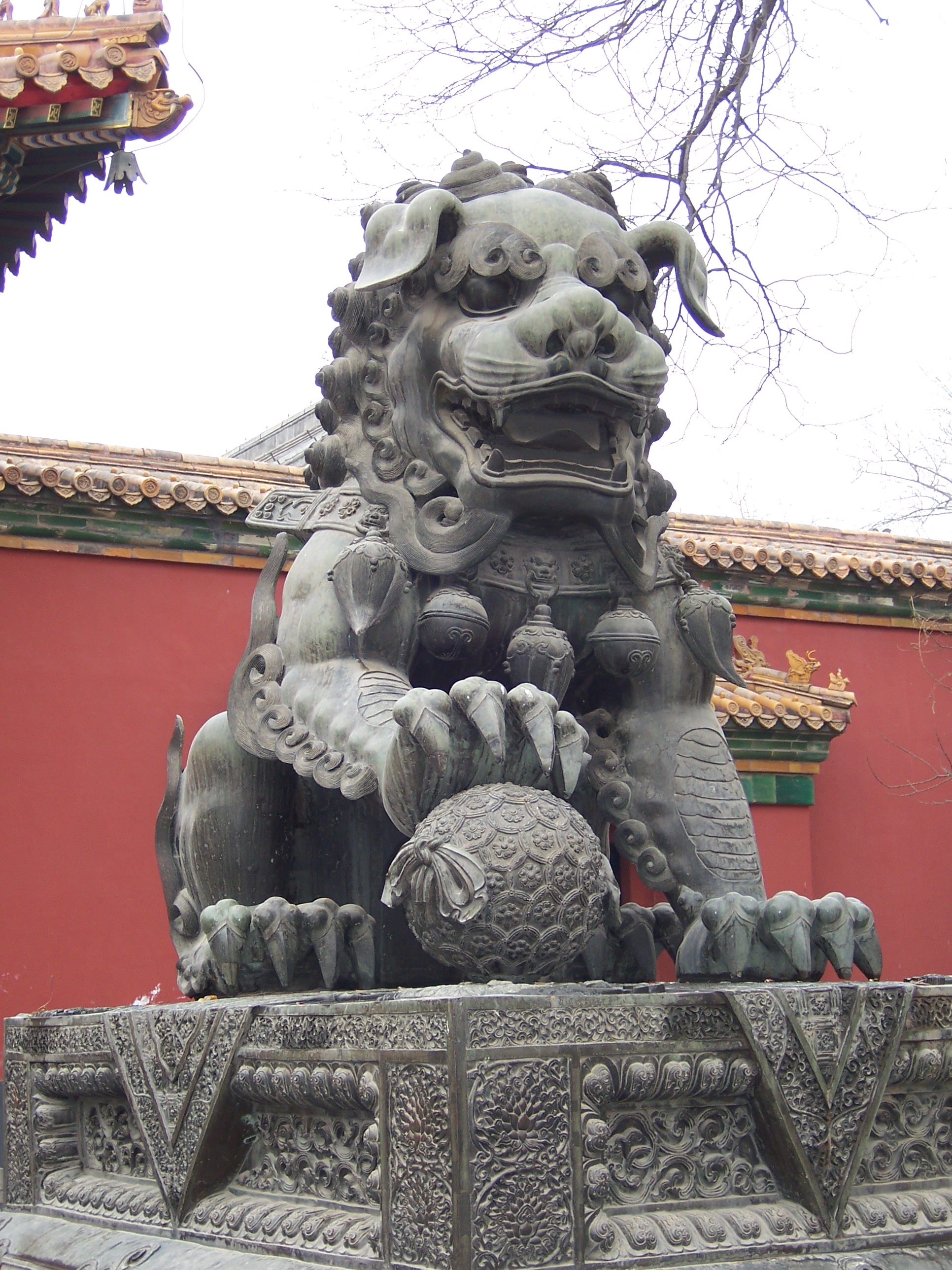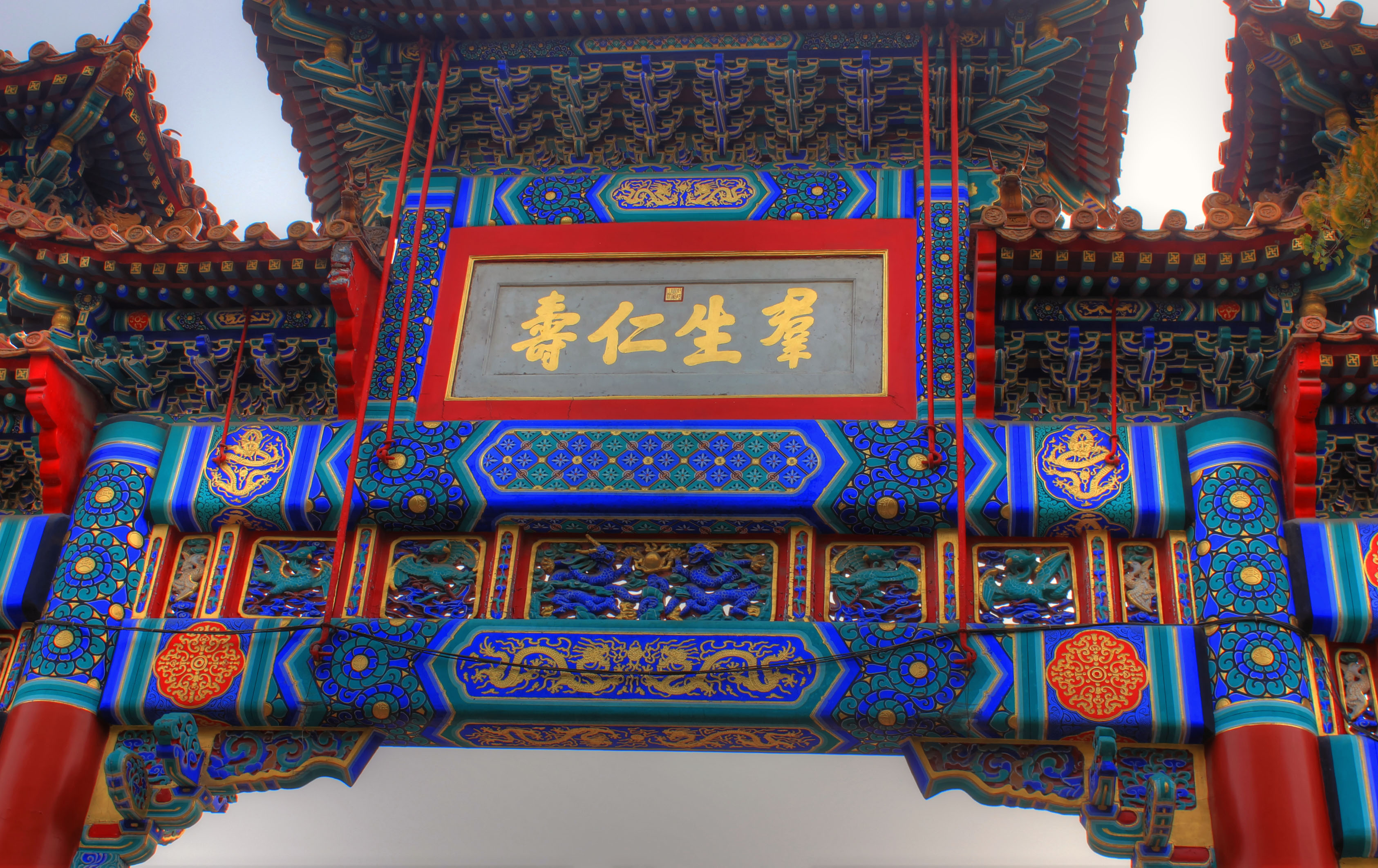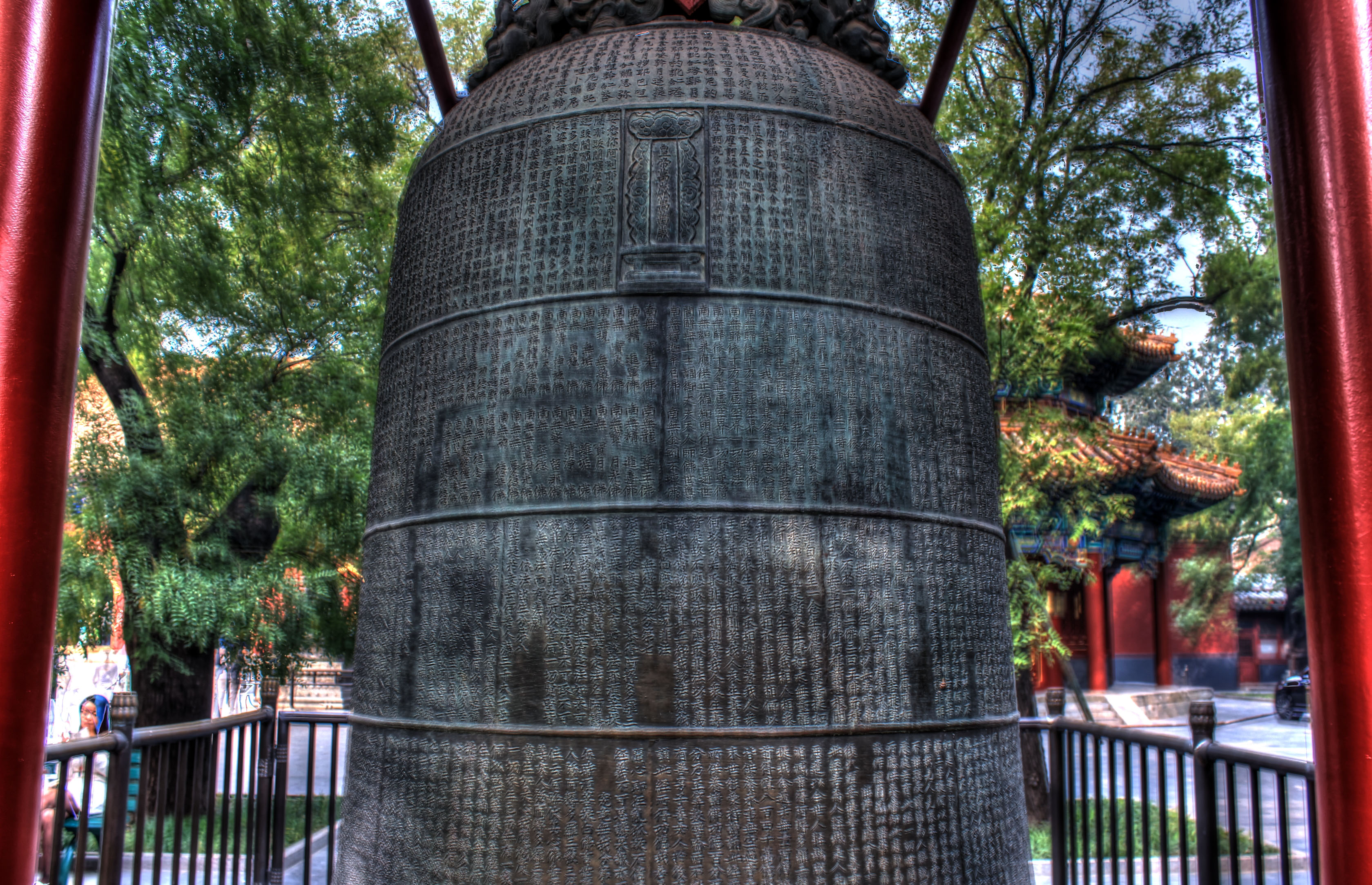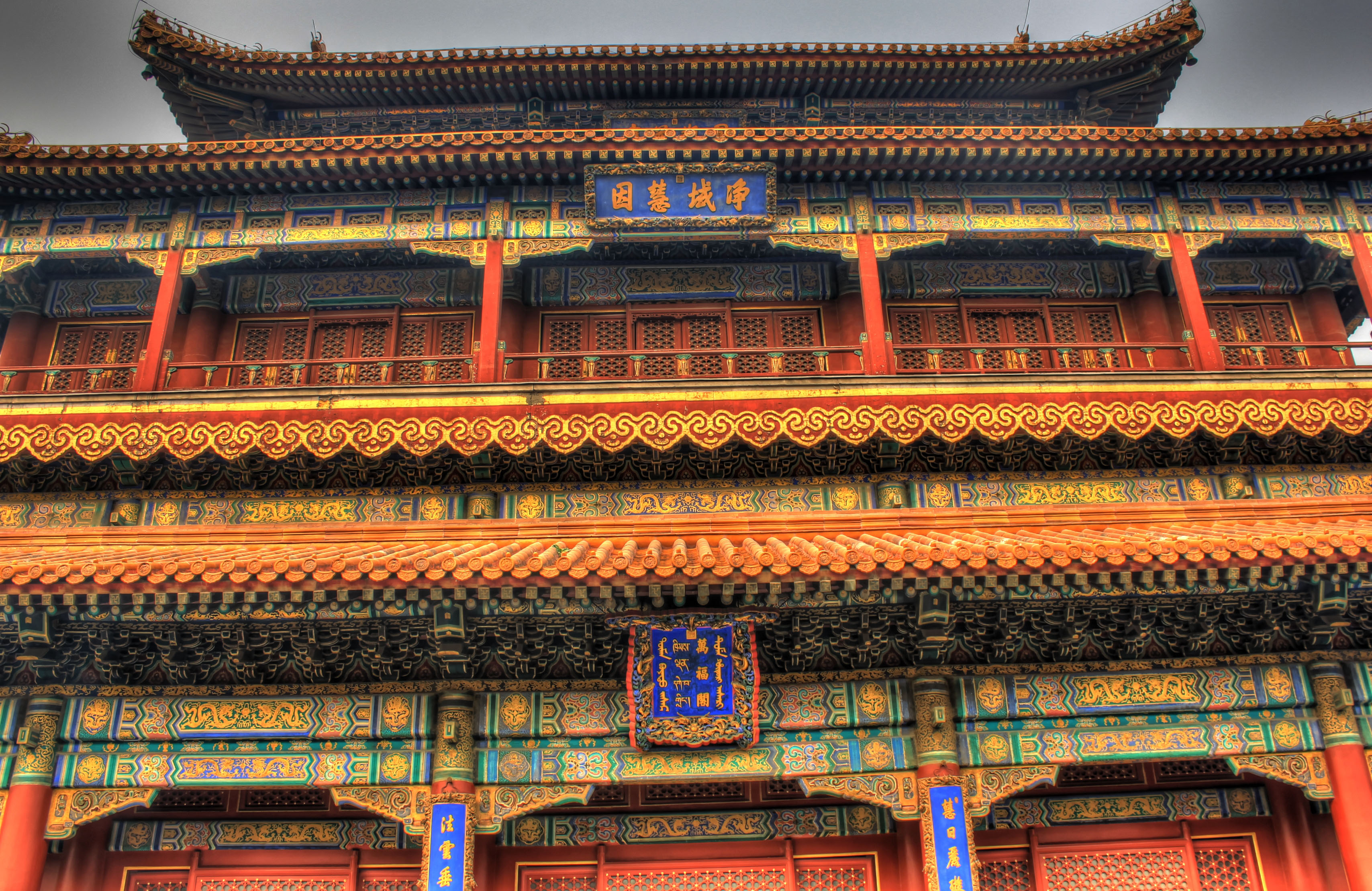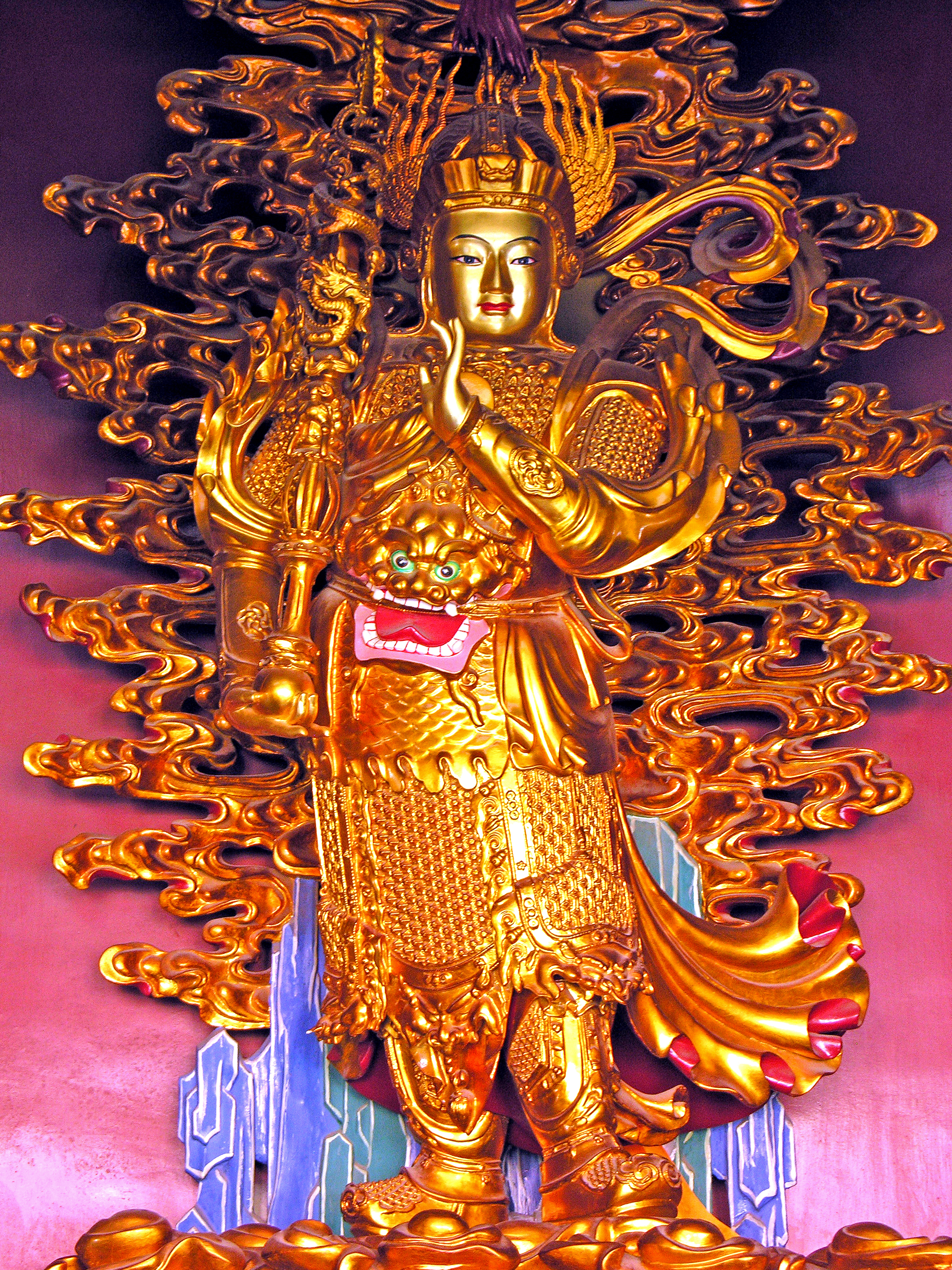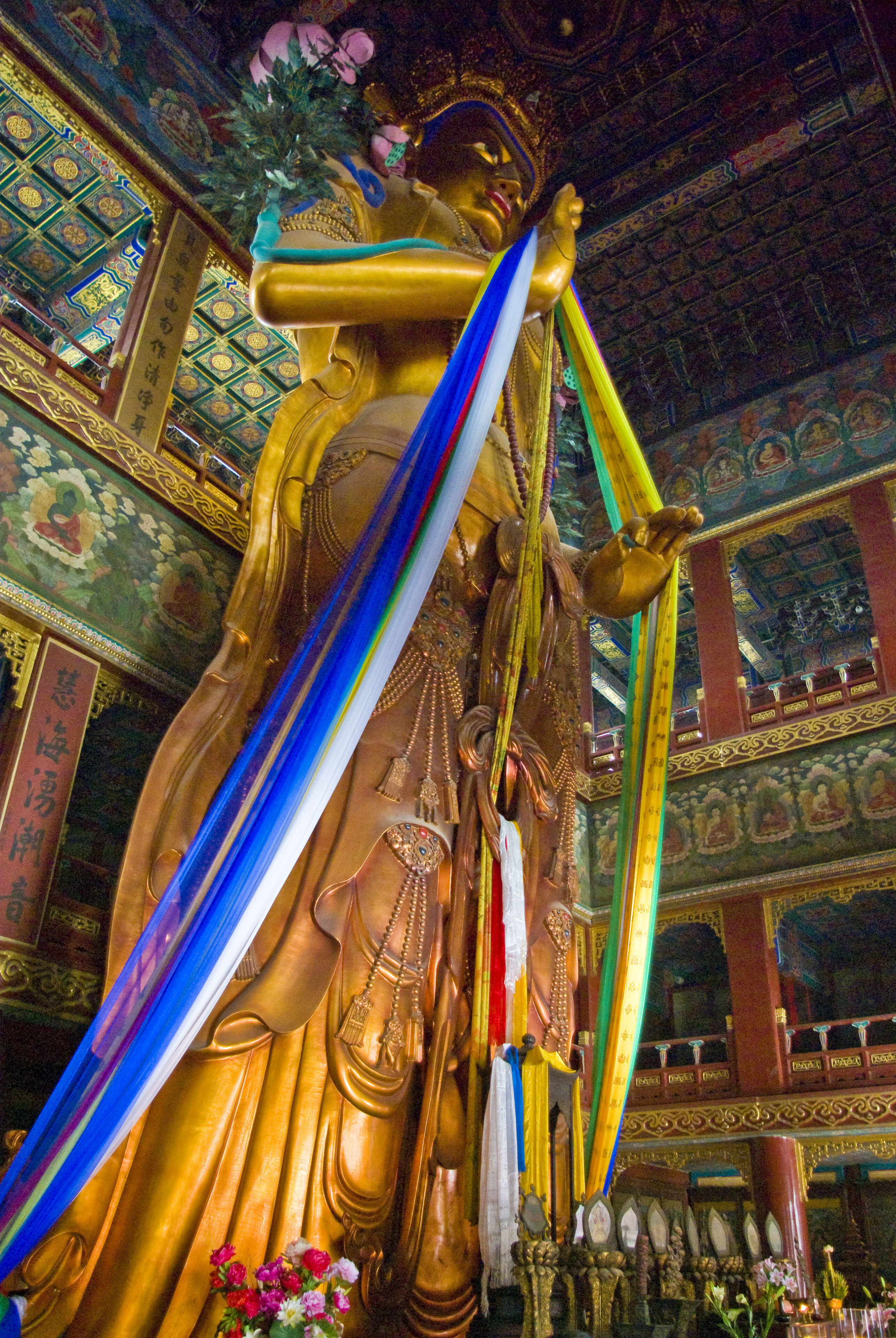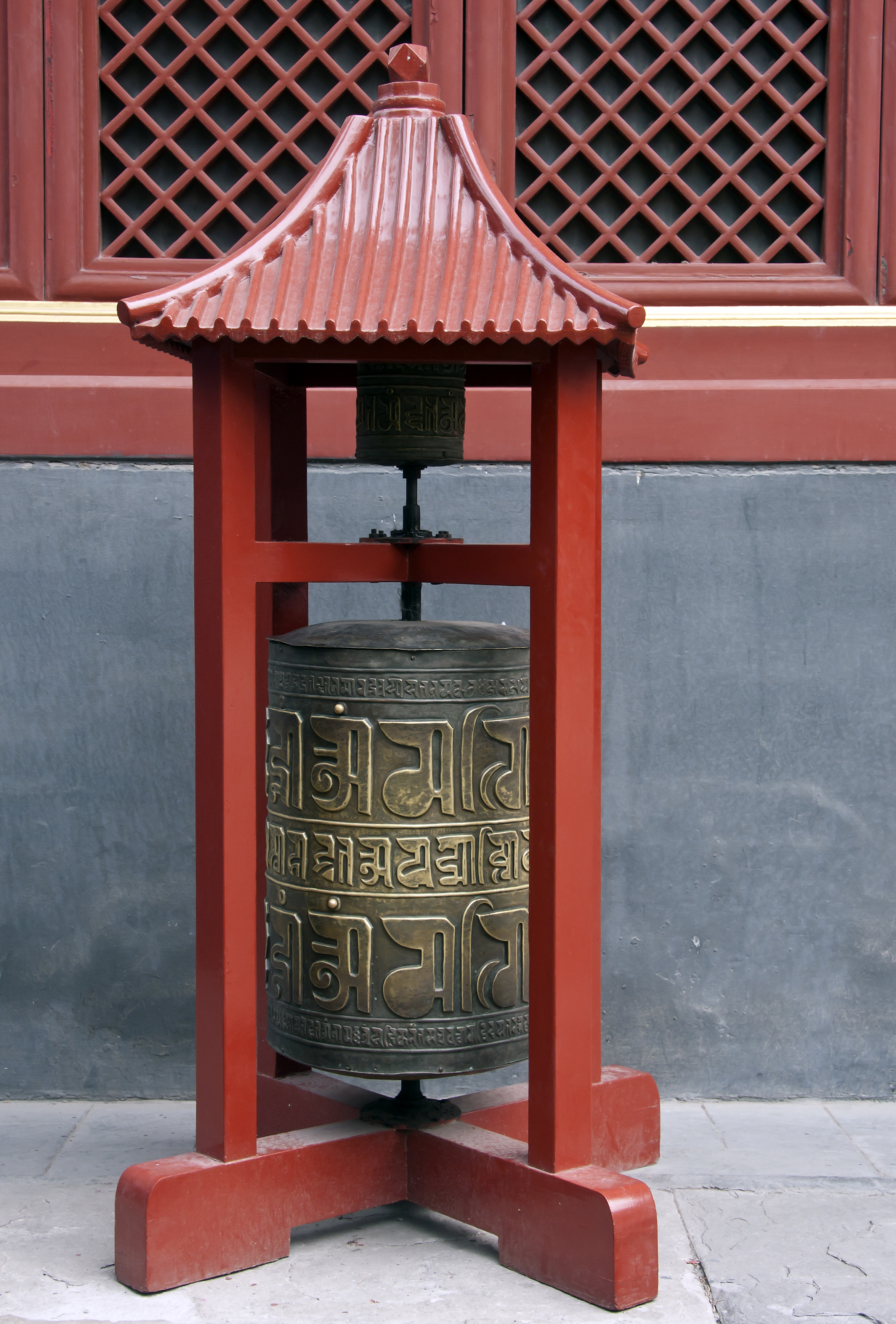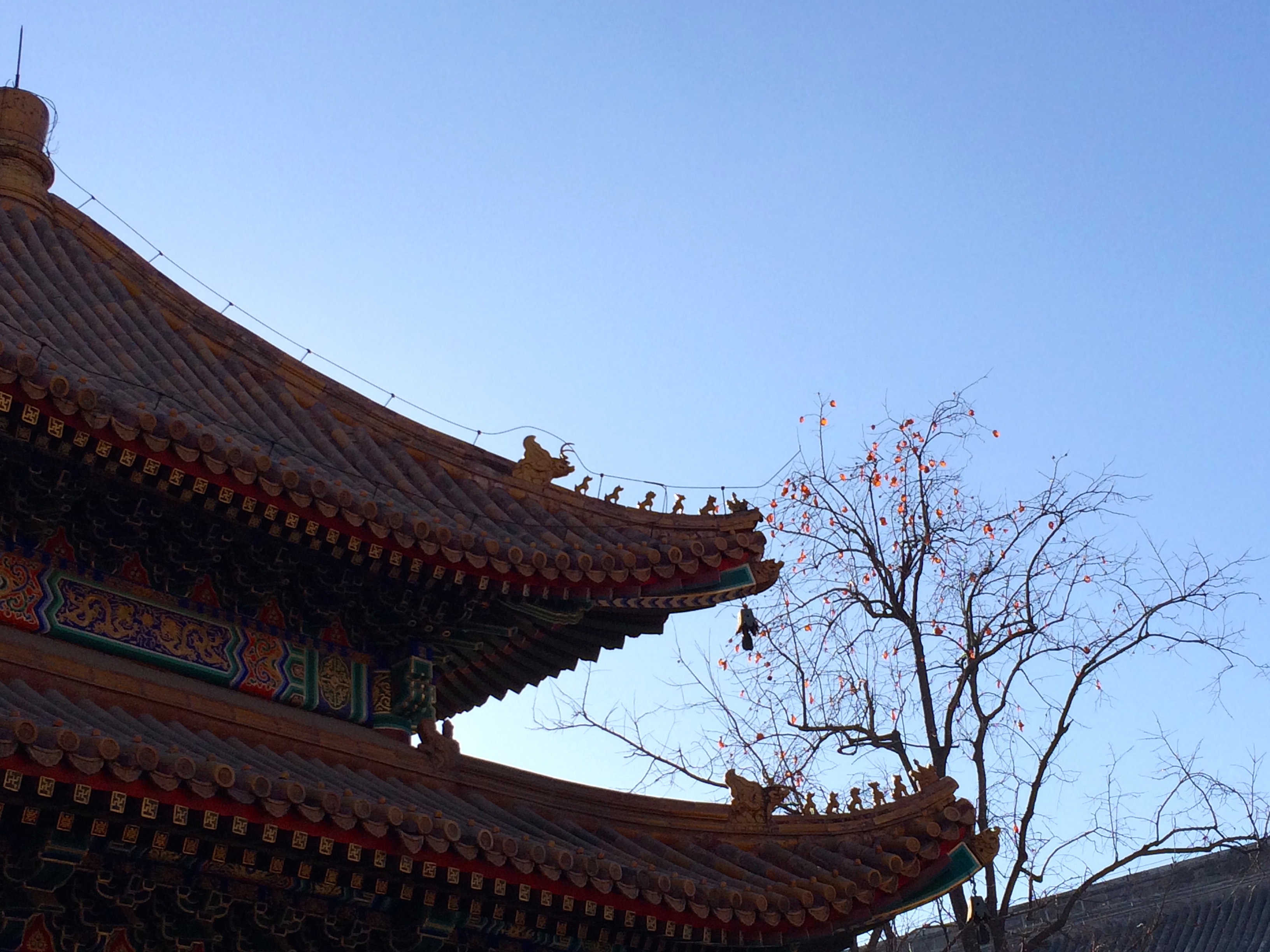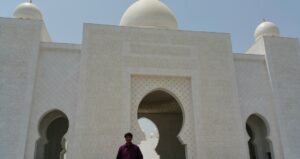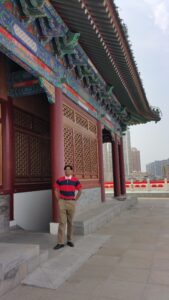
The Yonghe Temple (雍和宫 Literally “Palace of Peace and Harmony”) also known as the Yonghe Lamasery or popularly as the Lama Temple is a temple and monastery of the Gelug school of Tibetan Buddhism. The building and artwork of the temple is a combination of Han Chinese and Tibetan styles
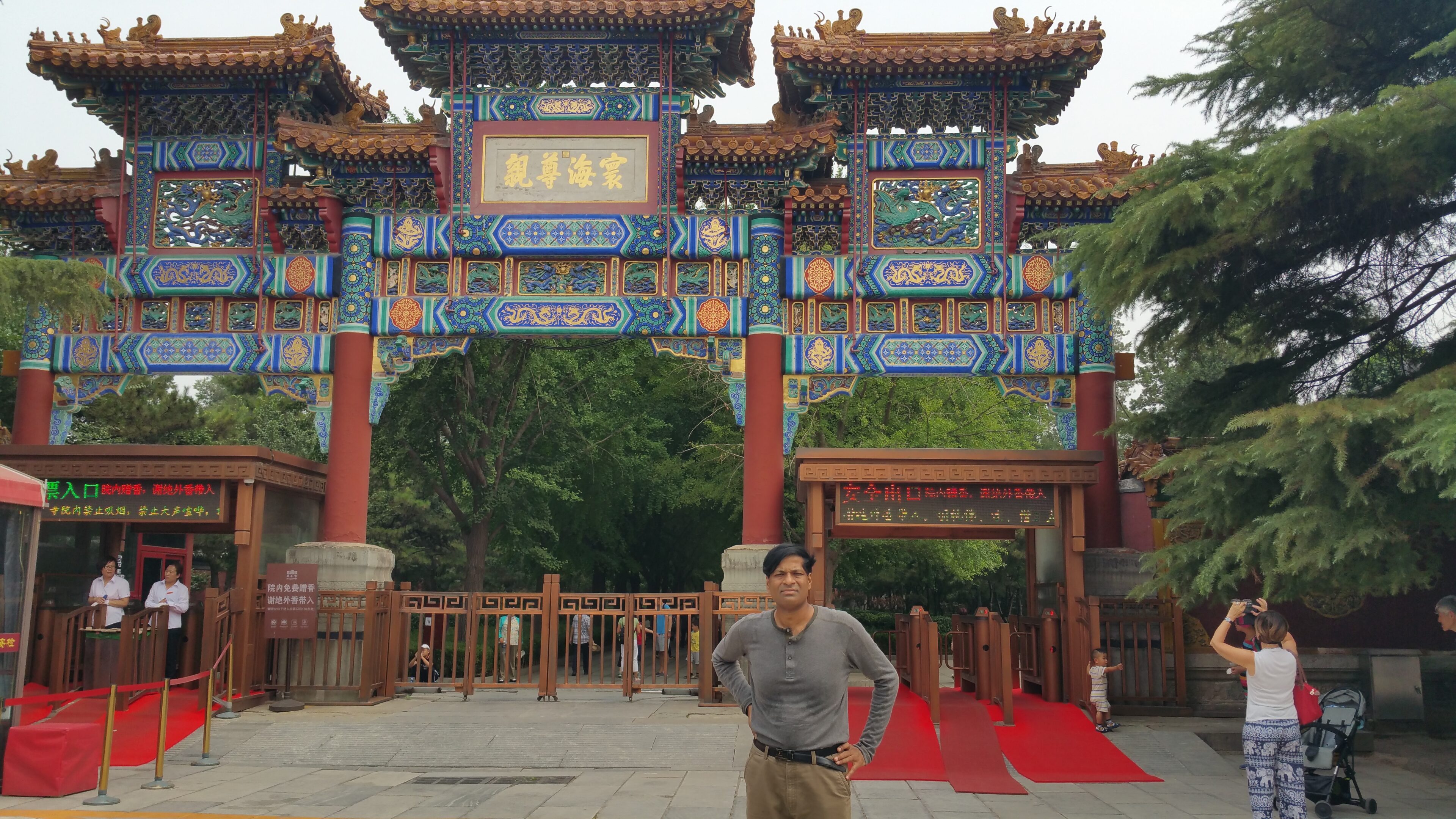
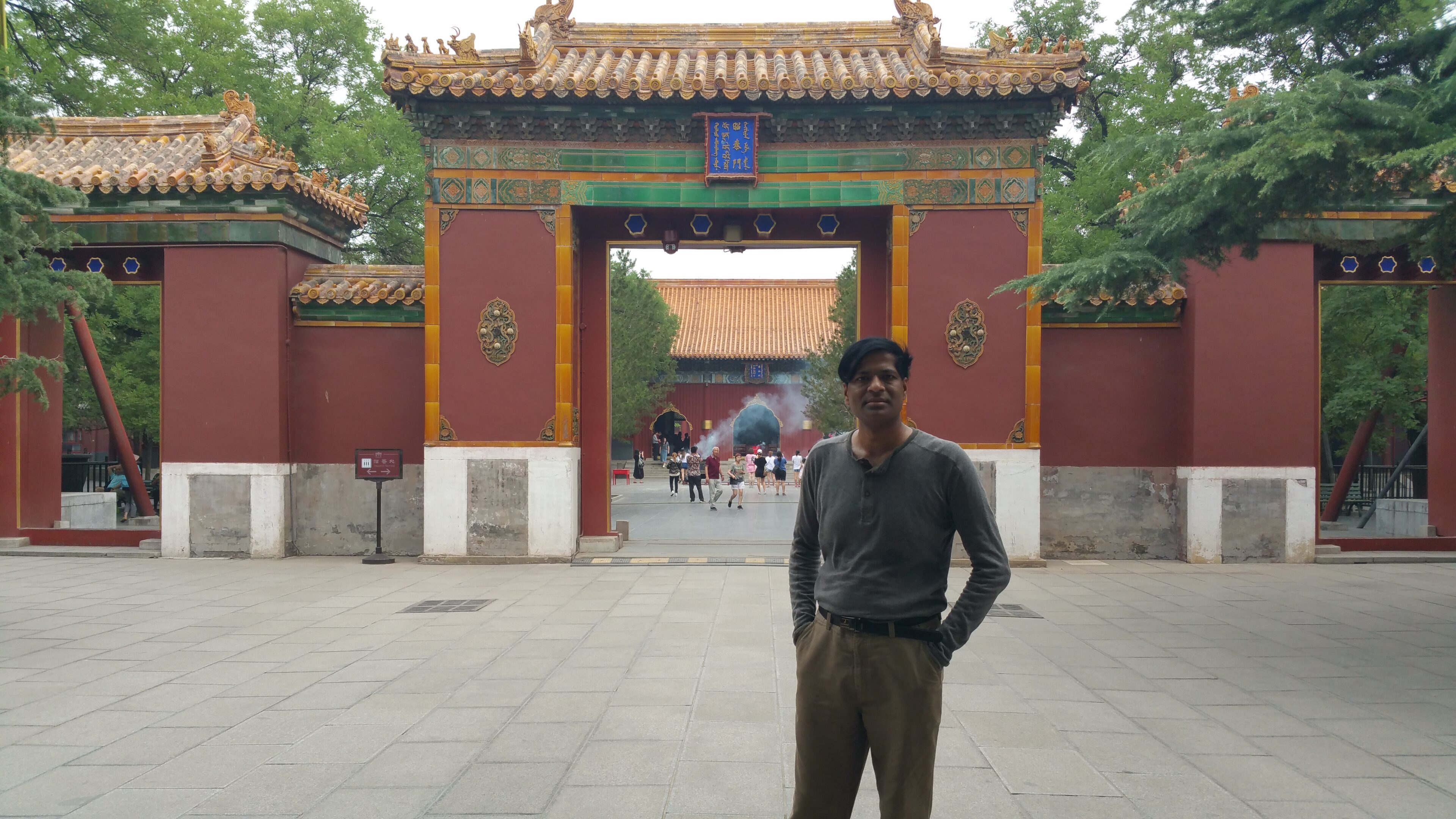
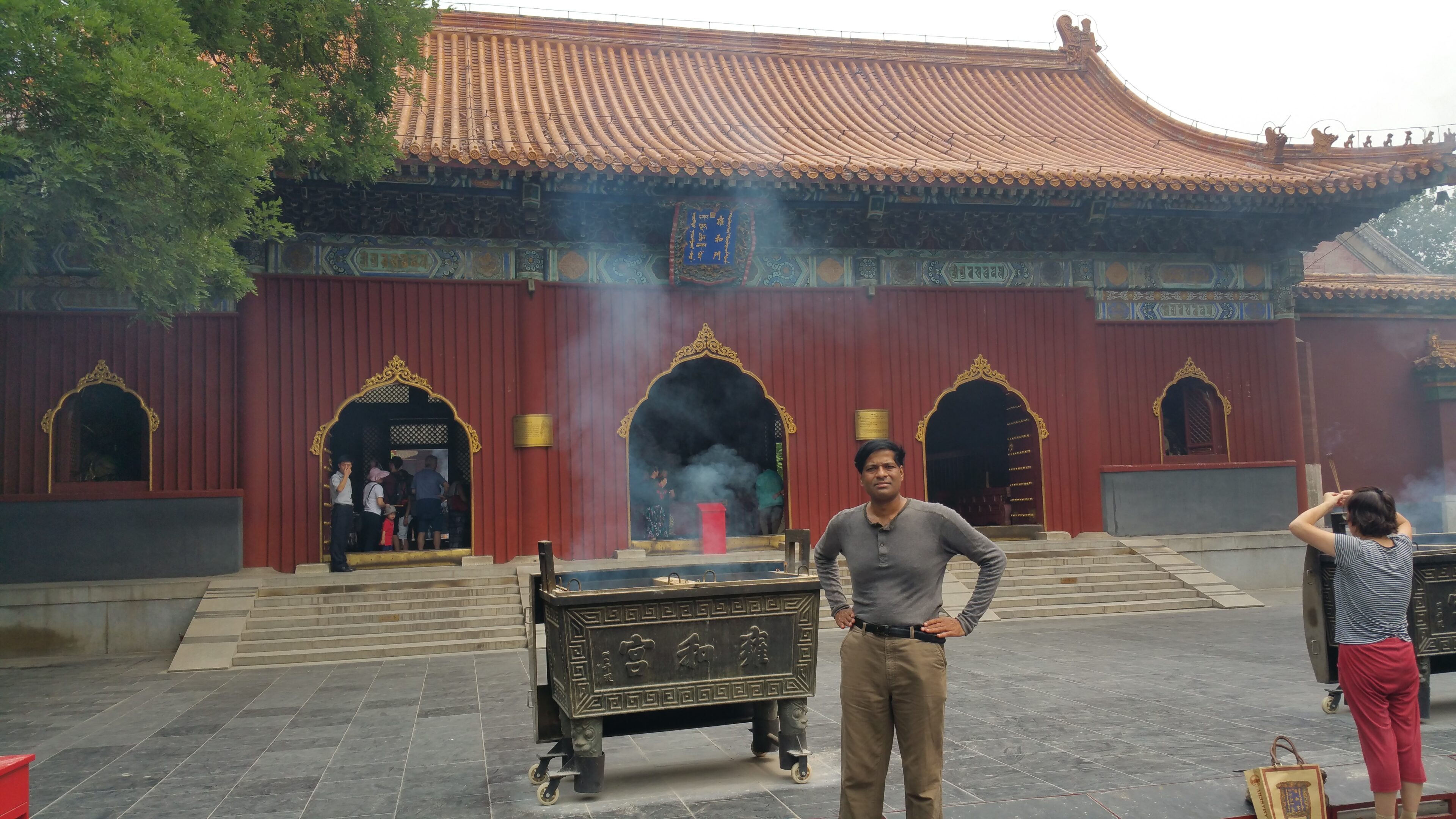
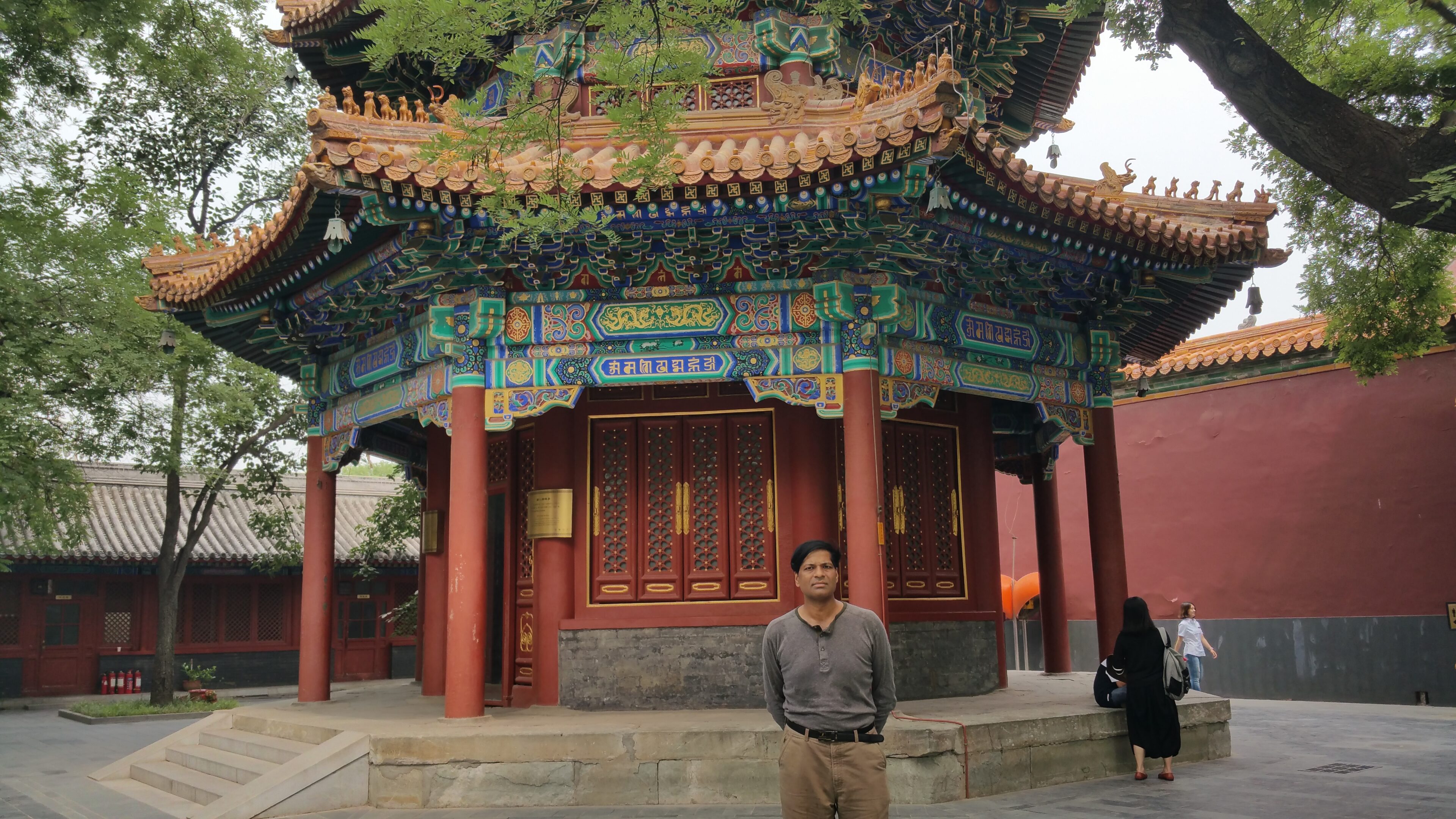
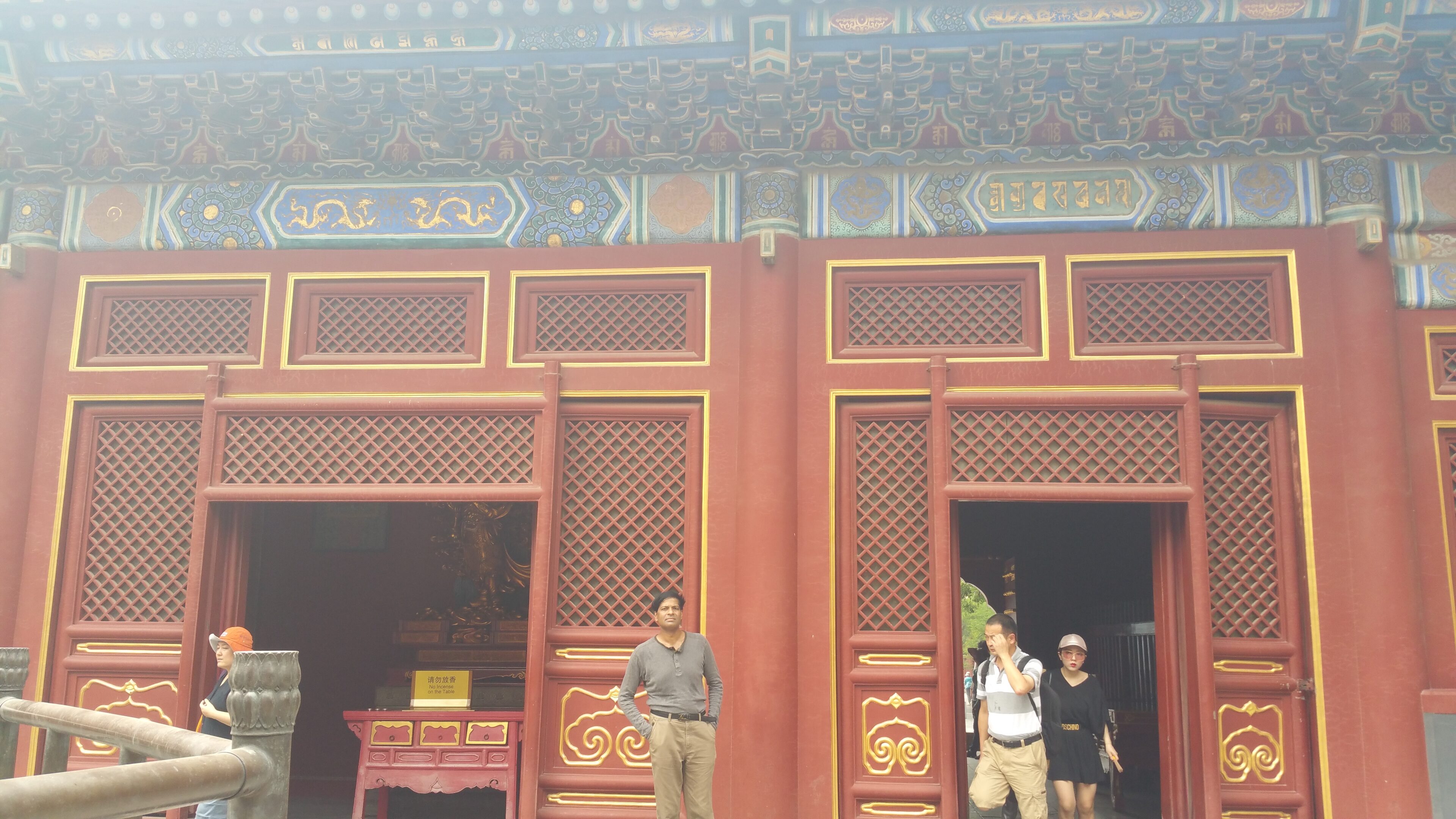
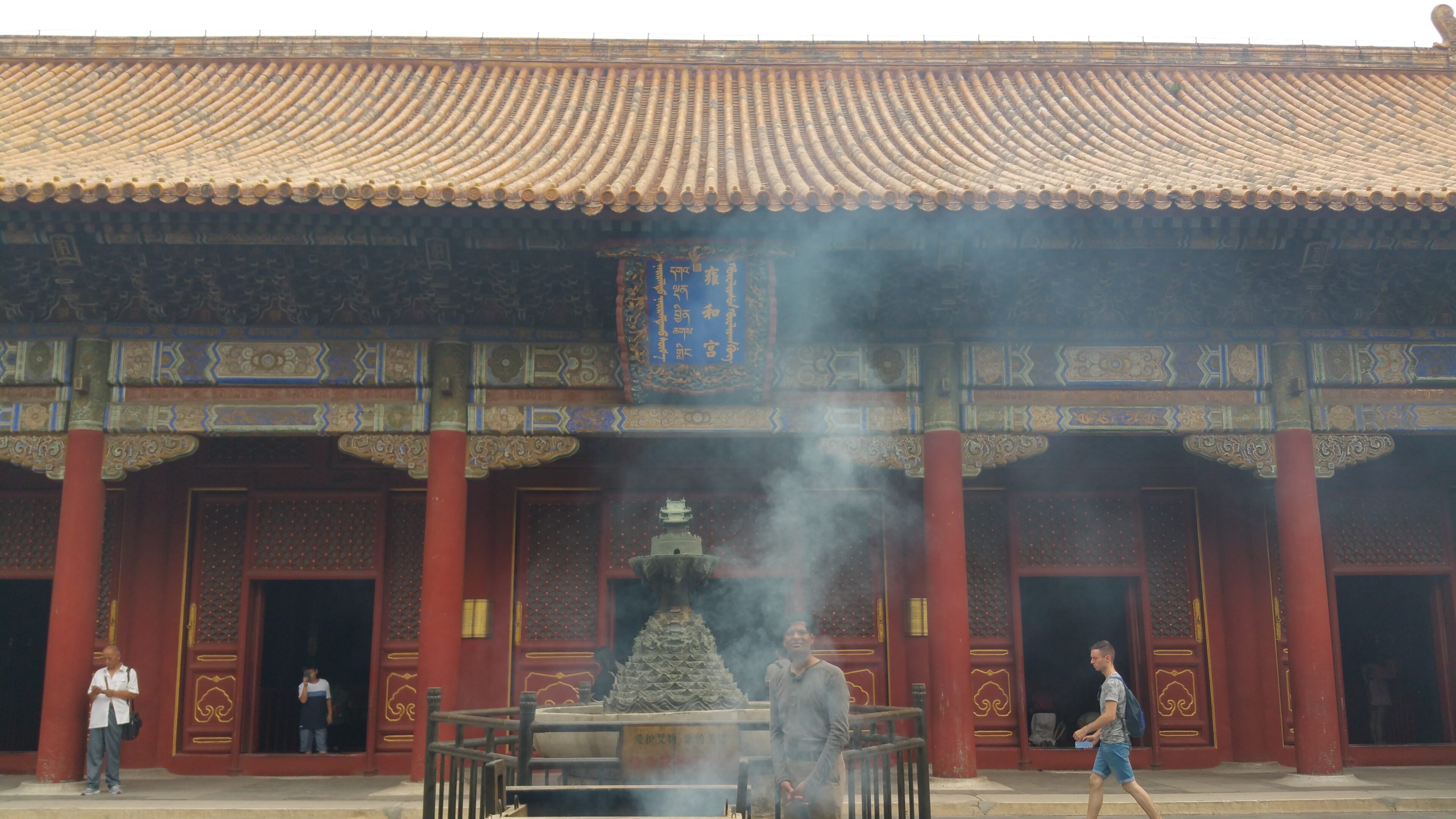

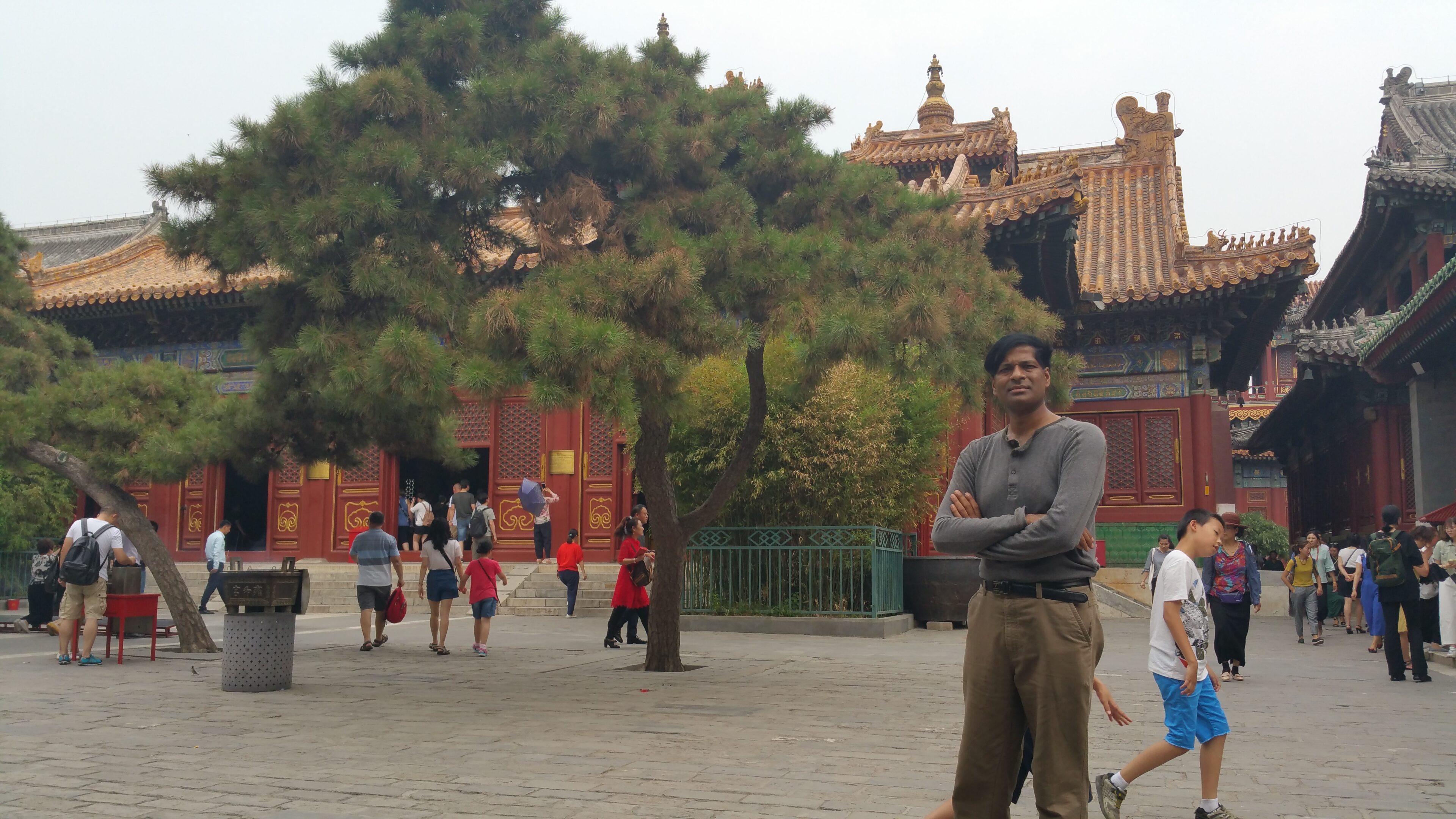
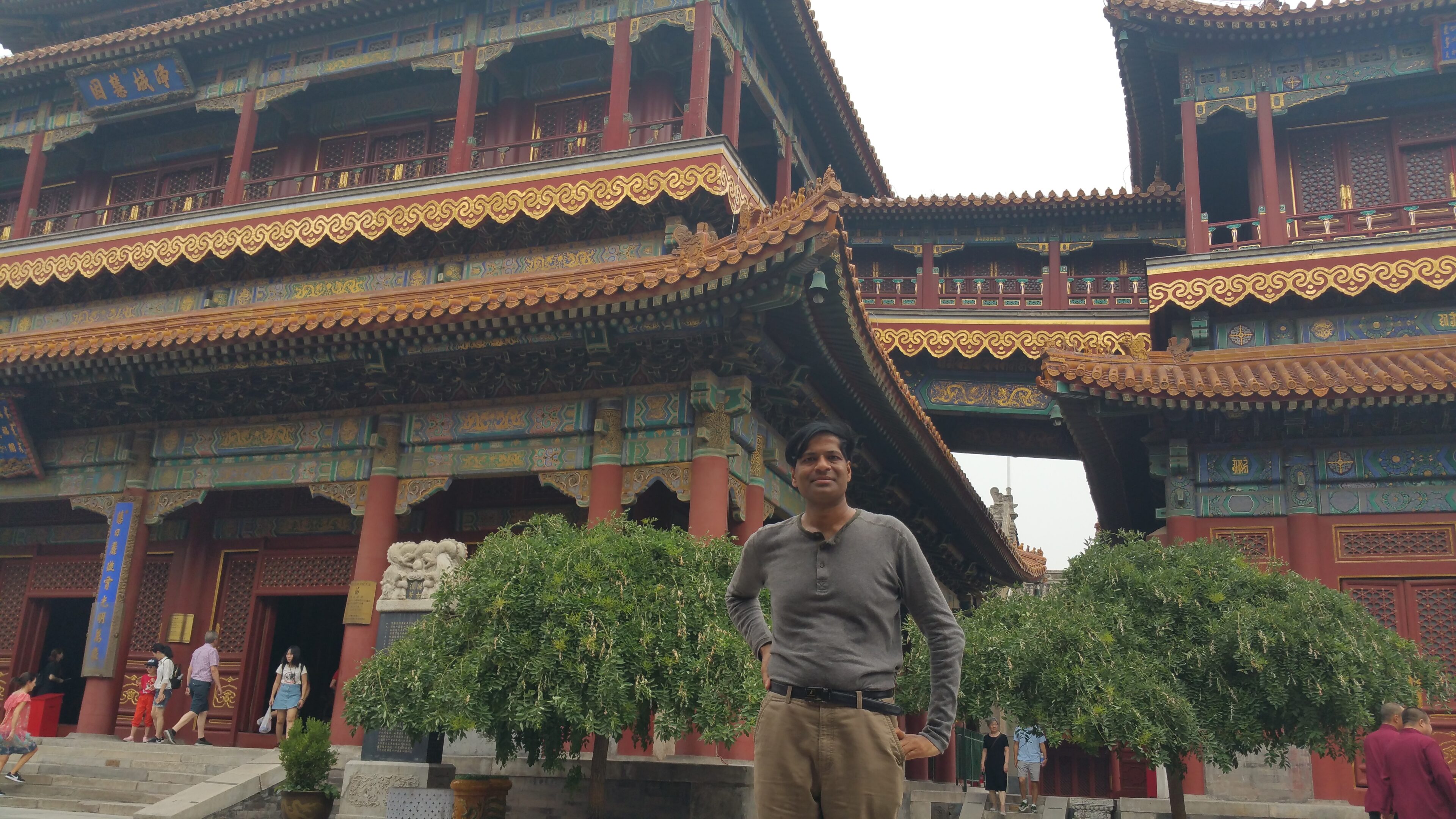
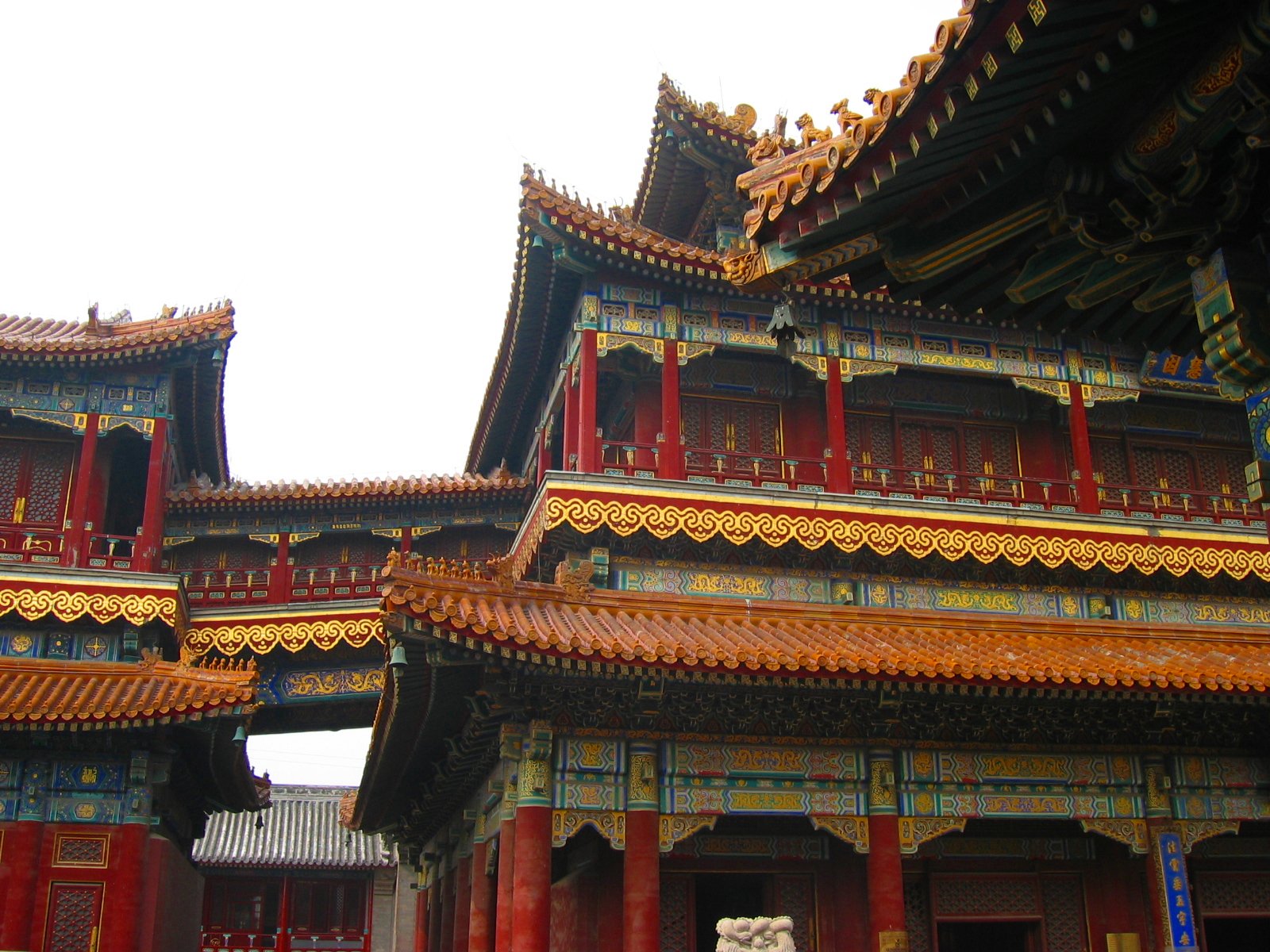
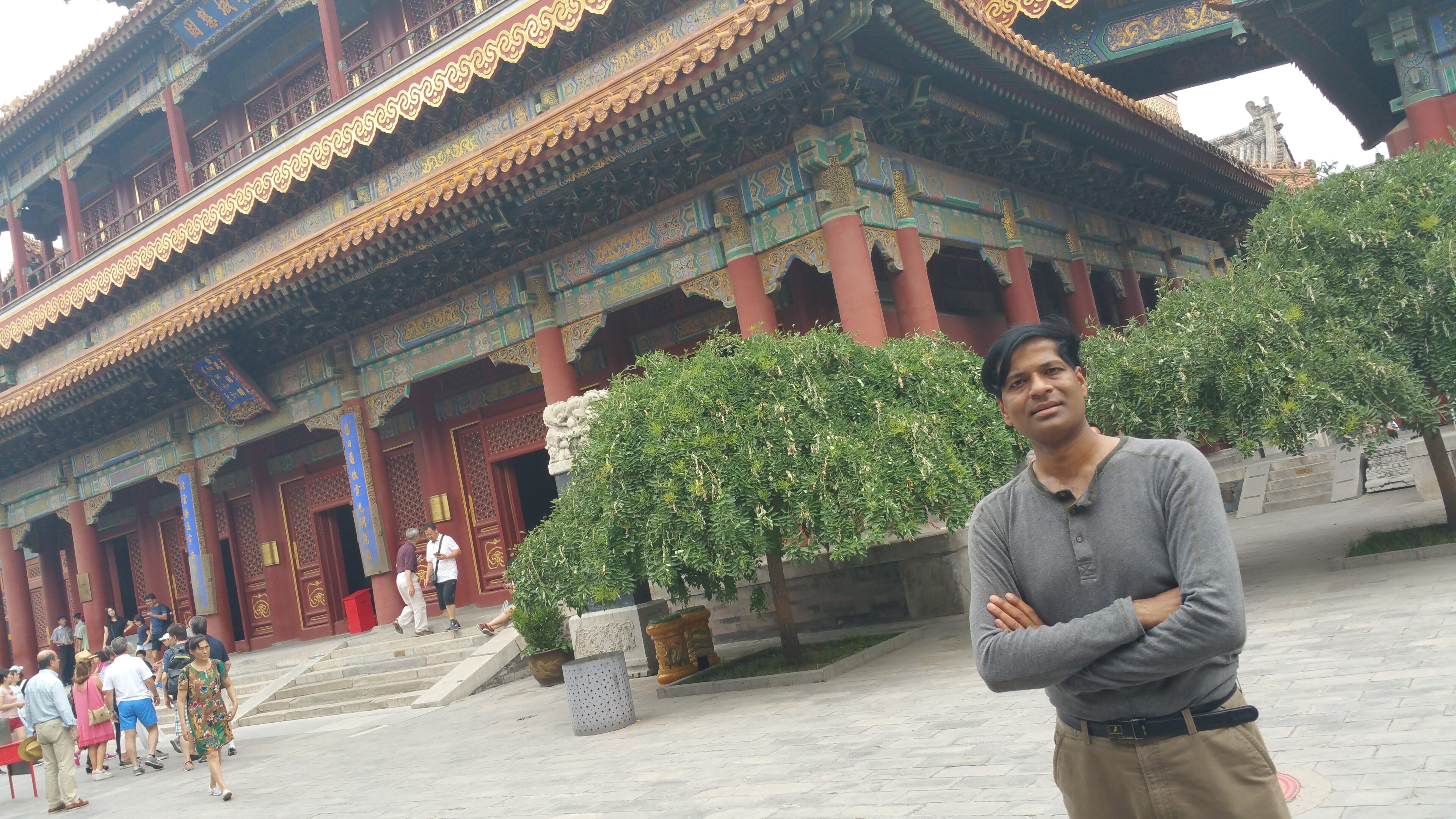
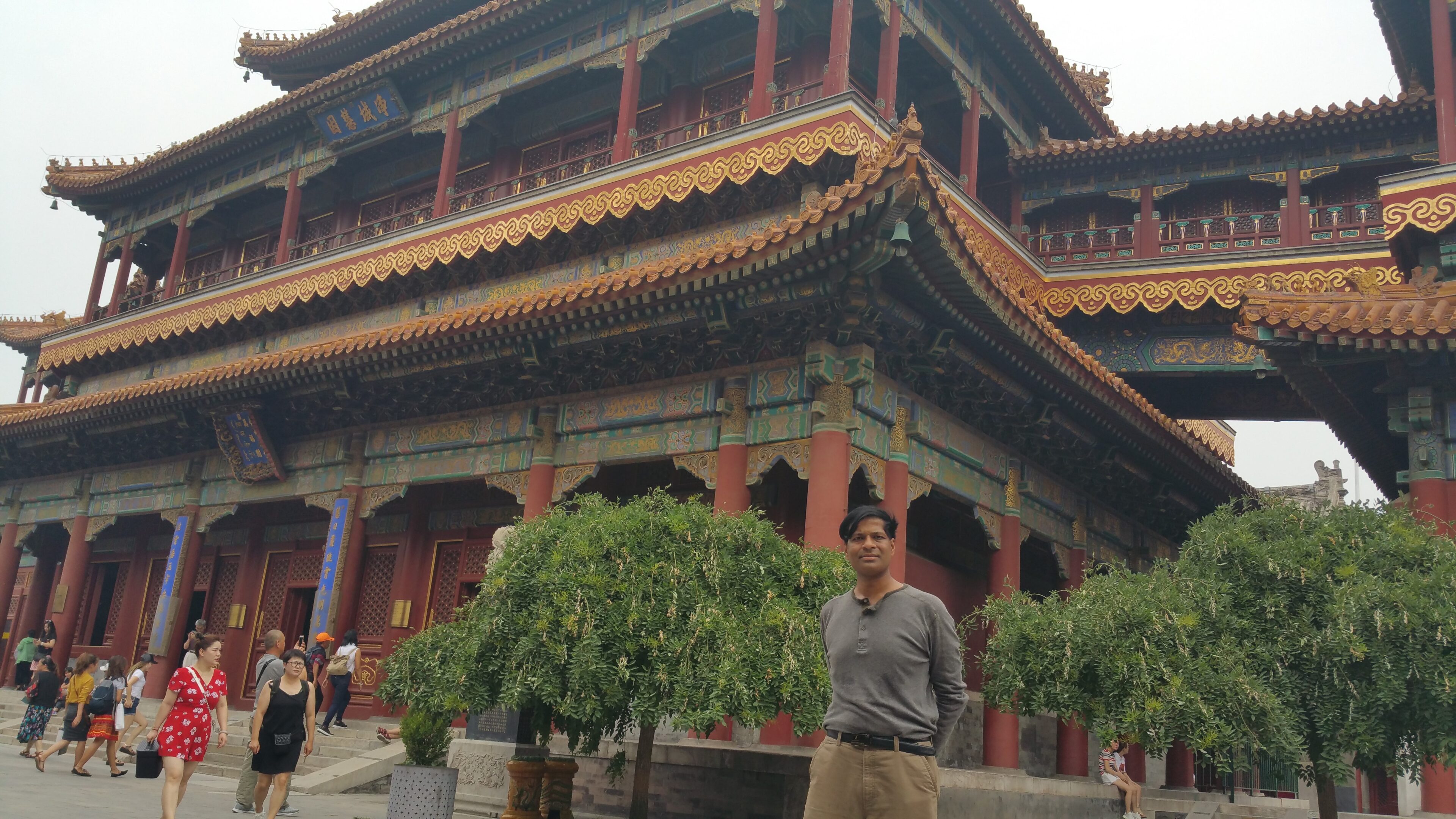
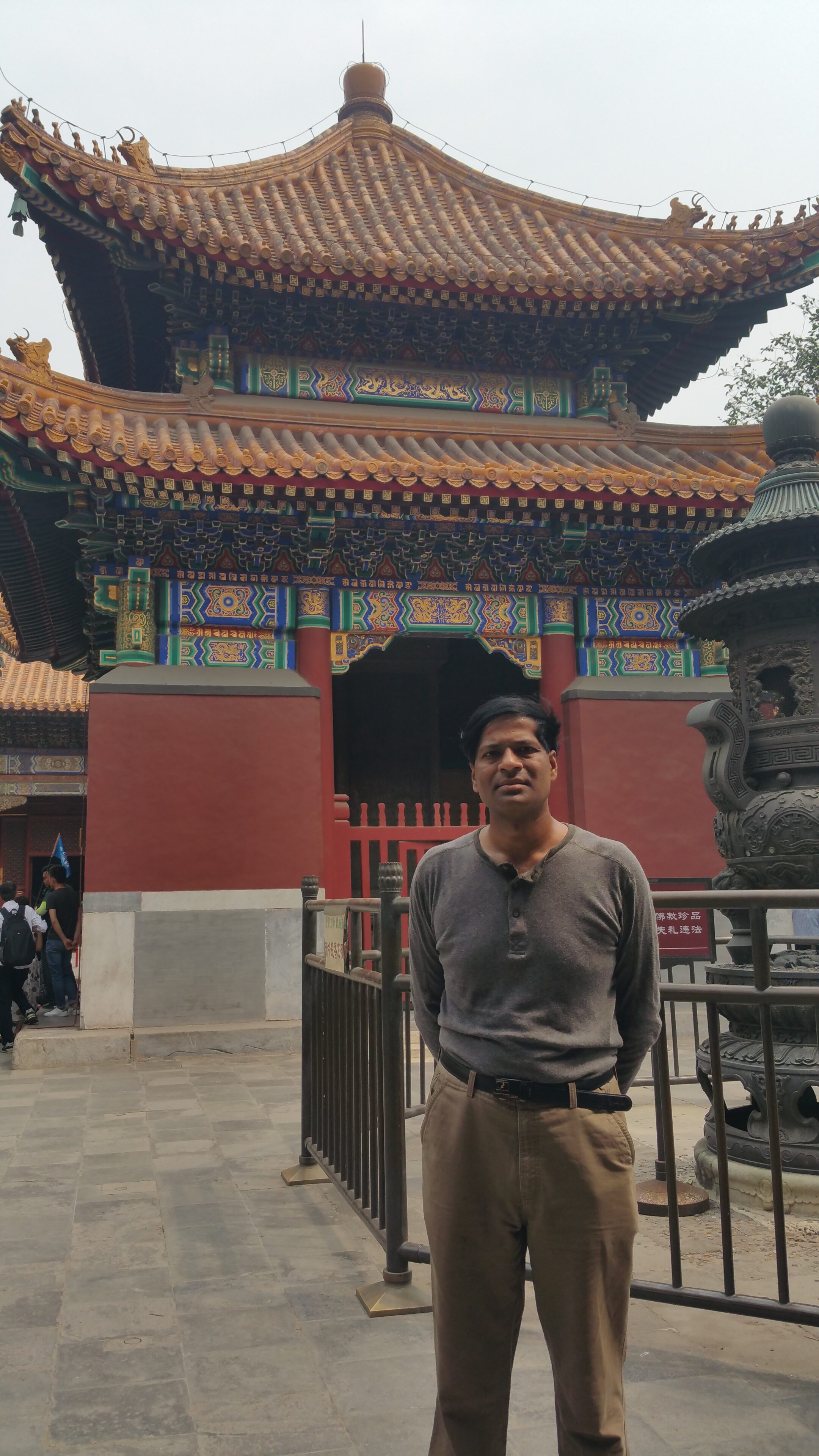
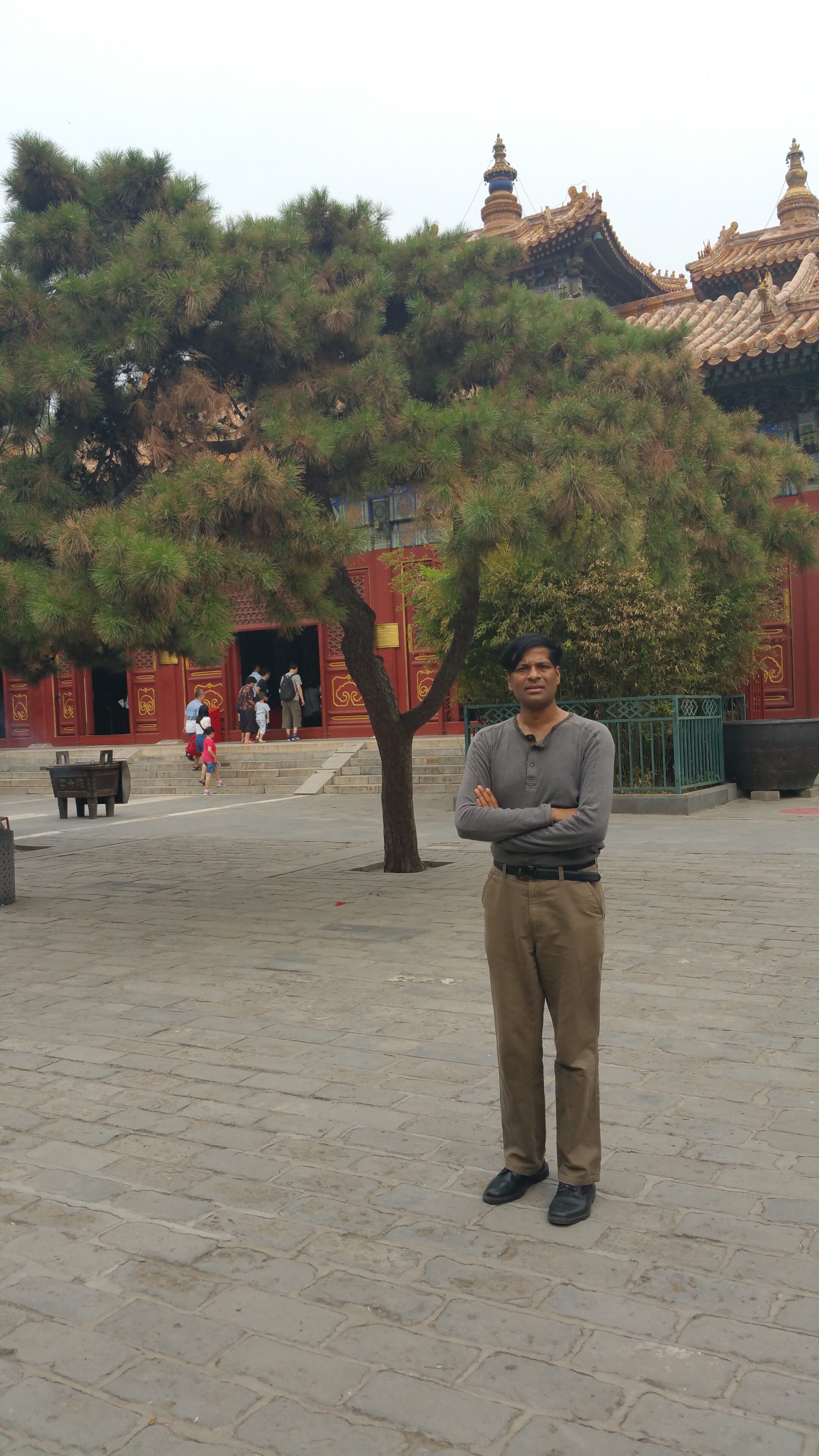
The Lama Temple is one of Beijing’s most famous monasteries – formerly an imperial palace and later converted into a Tibetan Buddhist monastery
The Yonghe Temple is arranged along a north-south central axis, which has a length of 480 metres. The main gate is at the southern end of this axis. Along the axis, there are five main halls which are separated by courtyards :
- The Gate Hall of Harmony and Peace (Yonghemendian)
- The Hall of Harmony and Peace(Yonghegong)
- The Hall of Everlasting Protection (Yongyoudian)
- The Hall of the Wheel of the Law(Falundian), and
- The Pavilion of Ten Thousand Happinesses (Wanfuge).
The Gate Hall of Harmony and Peace is the southernmost of the main halls, it served originally as the main entrance to the monastery. In the center of the hall stands a statue of the Maitreya Buddha, along the walls statues of the four Heavenly Kings are arranged.
The Hall of Harmony and Peace is the main building of the temple. It houses three bronze statues of the Buddhas of the Three Ages
- The statue of the Gautama Buddha (Buddha of the Present)
- The statue of Kasyapa Matanga (Buddha of the Past, right) and
- The Maitreya Buddha (Buddha of the Future, left)
Along the sides of the hall, the statues of the 18 Arhats are placed
A mural in the hall shows the bodhisattva Avalokitesvara.
The Hall of Everlasting Protection was Emperor Yongzheng’s living quarters as a prince and the place where his coffin was placed after his death. Today, a statue of the Bhaisajya-guru (healing Buddha) stands in this hall.
The Hall of the Wheel of the Law functions as a place for reading scriptures and conducting religious ceremonies
It contains a large statue of Je Tsongkhapa, founder of the Geluk School
The hall also contains the Five-Hundred-Arhat-Hill, a carving made of red sandalwood with statues of the arhats made from five different metals (gold, silver, copper, iron, and tin).
The Pavilion of Ten Thousand Happinesses (sometimes referred to as “The Hall of Boundless Happiness”) contains an 18m tall (with an additional 8m underground, making it 26m in total) statue of the Maitreya Buddha carved from a single piece of White Sandalwood
This was a gift from the seventh Dalai Lama to the Qianlong Emperor and took three years to transport from Tibet to Beijing
The statue is one of three artworks in the Temple which were included in the Guinness Book of Records in 1993
Three fabulous artworks
- Three bronze statues of the Buddhas of the Three Ages
- Five Hundred Arhat Hill
- 18m tall White Sandalwood statue of the Maitreya Buddha
